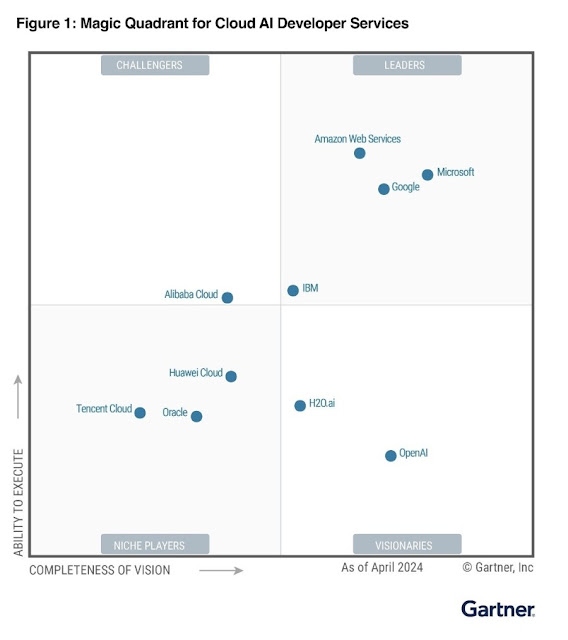At the heart of the marketplace is our extensive catalog of solutions from Microsoft’s robust network of partners and software development companies. These solutions are surfaced across our in-product experiences, as well as in our storefronts. Today, the marketplace supports a diverse catalog of AI-powered solutions, including AI-enabled software-as-a-service (SaaS) offerings, Copilot extensions, AI-enabled Microsoft Teams applications, machine learning models from partners such as Mistral AI, and more. While Microsoft supports a number of ways for partners to build AI-based technology, the marketplace is where customers can find all of these solutions from one trusted source.
Partners innovating with AI
We’ve seen a triple-digit percentage increase year-over-year in transactable AI offers published on the Microsoft commercial marketplace. And customers are eager to discover the AI solutions that best fit their unique needs. Visits to AI solution pages on our storefronts have increased more than 700% year-over-year, and AI solutions continue to make up a rapidly growing percentage of sales transacted through the marketplace.
During one of our Microsoft Build sessions, you’ll hear from two partners who are building exciting AI solutions that leverage the Microsoft Cloud and are available now through the marketplace:
- Pinecone helps companies build generative AI applications faster with vector databases. Pinecone can be deployed with Microsoft Azure and across various data sources, models, and frameworks. Pinecone serverless, coming to the marketplace soon, will deliver generative AI applications even faster at up to 50 times lower cost.
- UiPath’s Business Automation Platform enables customers to supercharge productivity, transform user experiences, and innovate faster with AI-powered automations. With more than 80 platform integrations, customers can tap into UiPath enterprise-grade automation capabilities directly from Microsoft 365, Azure, Microsoft Dynamics 365, and Copilot.
Smarter purchasing through the marketplace
Microsoft is the only company that can support the entire ecosystem of AI—from the infrastructure and data layers all the way to the front-end user experience with Copilot. This enables developers to build next-generation AI tools quickly and for partners to connect their AI solutions to the Microsoft customer base through the marketplace—making it efficient and scalable for organizations to discover and adopt AI broadly. During this AI transformation, the Microsoft commercial marketplace is how we are enabling businesses of every size to access the solutions they need.
With rapid technological development, it has become even more important to balance the need to innovate with meeting business requirements. By aligning SaaS strategy to the marketplace, organizations can unify their data to get the most out of their AI investments:
- Try before you buy. The marketplace allows you to try new solutions before you make a larger commitment. Free trials or direct purchases of a small number of licenses can ensure the technology works for your organization before making a big investment. The marketplace also supports proofs-of-concept with private offers, so you can further vet solutions before widescale adoption.
- Innovate faster. Centralizing cloud portfolios helps you decrease time-to-value. AI solutions are part of one comprehensive catalog and pre-certified to run on Azure. Vendors can be onboarded instantly, and billing is simplified through a single invoice.
- Maximize investments. Organizations can optimize cloud spend by counting the solutions they need towards their Azure consumption commitment. Microsoft automatically counts 100% of eligible offers towards your commitment, helping unlock discounts on Azure infrastructure.
- Create alignment across teams. The marketplace makes it easier to keep teams aligned using approved solutions. With private Azure marketplace, an administrator can pre-select approved solutions so your team can compliantly access what they need. If a needed solution is not yet approved, team members can easily request it be added, empowering innovation with the right guardrails to safeguard investments.
All of this translates into huge savings of time and money. In a 2023 Total Economic Impact™ study commissioned by Microsoft, Forrester Consulting found the marketplace delivers customers a three-year 587% return on investment (ROI) with a payback period of less than six months.
Join us at Microsoft Build
We’re excited to be accelerating the era of AI by setting the standard for the creation and commerce of AI solutions. For developers building new solutions, I encourage you to check out tools and benefits from ISV Success that will help you realize these innovations. Partners can also use Marketplace Rewards to accelerate their marketplace growth and generate high impact opportunities.
Source: microsoft.com














